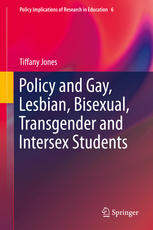

Most ebook files are in PDF format, so you can easily read them using various software such as Foxit Reader or directly on the Google Chrome browser.
Some ebook files are released by publishers in other formats such as .awz, .mobi, .epub, .fb2, etc. You may need to install specific software to read these formats on mobile/PC, such as Calibre.
Please read the tutorial at this link: https://ebookbell.com/faq
We offer FREE conversion to the popular formats you request; however, this may take some time. Therefore, right after payment, please email us, and we will try to provide the service as quickly as possible.
For some exceptional file formats or broken links (if any), please refrain from opening any disputes. Instead, email us first, and we will try to assist within a maximum of 6 hours.
EbookBell Team

0.0
0 reviewsThis book addresses policy research on homophobic and transphobic bullying in schools. It covers quantitative and qualitative research into policy impacts for gay, lesbian, bisexual, transgender and intersex students. It draws on a large-scale Australian study of the impacts of different kinds of policy at the national, state, sector and school level. The study covers over 80 policies, interviews with key policy informants and survey data from 3,134 GLBTIQ students. Since new guidelines were released by UNESCO, homophobic and transphobic bullying in schools has become a key area of interest around the world. There has been much pressure on educational leadership to engage with these issues since the UN released international human rights legislation on sexual orientation and gender identity that have implications for student rights. The book presents statistically significant correlations between specific types of state and school level education policies that explicitly named homophobia/ GLBTIQ student issues, and lowered incidence of homophobic bullying, lowered risk of suicide and self-harm for these students. It includes stories from policy makers on how the policies came to be (through lawsuits, ministerial inquiries and political activism), right through to the stories of students themselves and how they individually felt the impacts of policies or policy lacks. International contexts of homophobic and transphobic bullying are discussed, as well as recent transnational work in this field. The book considers the different types of collaborations that can lead to further policy development, the transferability of the research and some of the benefits and problems with transnational policy adoptions.